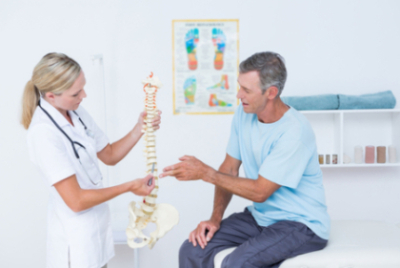Do I Have Tendonitis or Tendinosis?
You’ve probably had or at least heard of the tendon problem known as tennis elbow. And chances are you’ve heard people say that it’s a form of tendonitis.
You may not have heard of the other type of tendon problem called tendinosis.
Its symptoms are often mistaken for tendonitis, and therefore, it’s often treated like tendonitis.
Let’s zoom in on five common misunderstandings to see if we can clear up the confusion.
1. Tendonitis is a chronic pain condition. (Wrong!)
Tendonitis is acute or sudden onset, short-term pain from inflammation due to a direct injury.
The symptoms of tendonitis, which are due to inflammation, include swelling, redness, and warmth.
By contrast, tendinosis or tendinopathy is chronic or consistent and recurring pain due to degeneration. Repetitive trauma or injuries causes degeneration characterized by microscopic tears in the tendon.
Tendinosis symptoms include pain but no swelling, redness, or warmth.
2. Rest is always the best treatment for tendon pain. (Wrong!)
Resting or keeping weight off the tendon doesn’t cure tendinosis because the pain is due to degeneration rather than inflammation.
The initial pain and swelling of tendinosis are similar to inflammation, but the underlying cause is chronic degeneration due to aging, repetitive use, or repeated injury.
Tendonitis, however, is characterized by inflammation. Therefore, resting or keeping weight off of the tendon does help bring healing and pain relief.
3. Anti-inflammatory medication, steroid injections, and cold therapy are always effective treatments for tendon pain. (Wrong!)
These are effective treatments for pain from inflammation, so they are effective in treating tendonitis.
For tendinosis, anti-inflammatory medication, steroid injections, and cold therapy can relieve pain in the short run but can’t heal the degenerative damage.
What will provide healing and pain relief is physical therapy that stretches the injured tendon and surrounding muscles.
4. Tennis elbow is always tendonitis. (Wrong!)
The truth is, tennis elbow can be either tendinosis or tendonitis. Tennis elbow affects the tendons that connect the forearm muscle to the outside of the elbow.
Treatment will depend on the type of tendon pain.
5. Plantar fasciitis is a form of tendonitis. (Wrong!)
Plantar fasciitis is tendinosis in the plantar fascia, the long, thin ligament on the bottom of the foot. Over time, micro-tears develop in the plantar fascia, which causes pain.
Tendonitis and tendinosis treatment in Houston and Dallas
At Texas Pain Physicians, our pain management specialists know how to diagnose and treat tendon pain. Please don’t make the mistake of guessing what’s causing your pain then applying the wrong treatment.
To make your appointment, give us a call or book online today!








